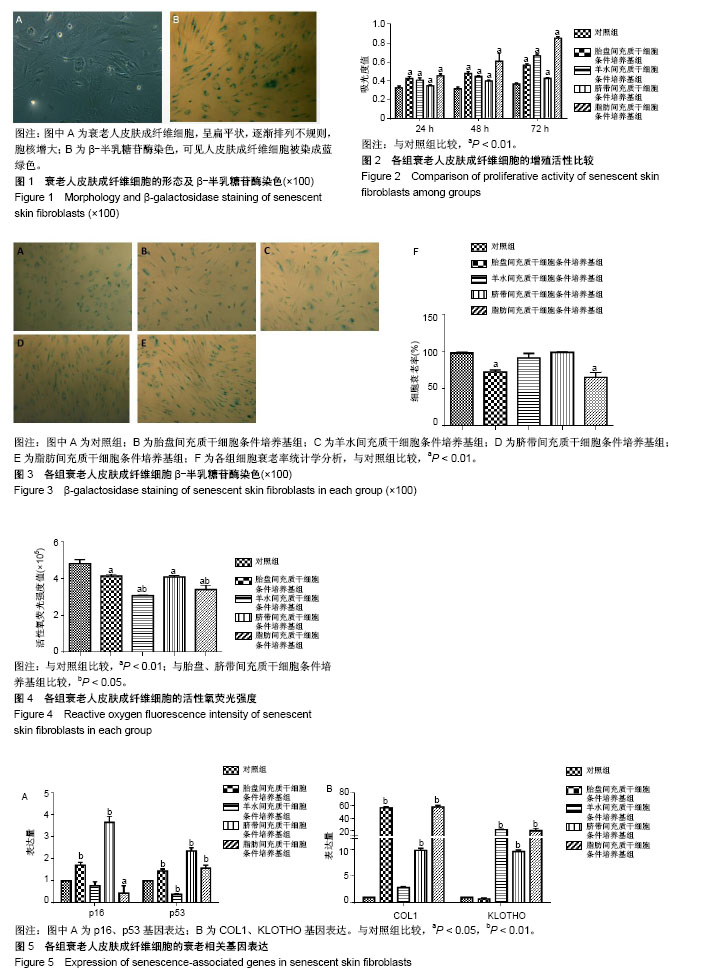| [1] Fernández JR, Webb C, Rouzard K, et al. SIG-1273 protects skin against urban air pollution and when formulated in AgeIQ™ Night Cream anti-aging benefits clinically demonstrated. J Cosmet Dermatol. 2018 Nov 19. doi: 10.1111/jocd.12825. [Epub ahead of print][2] Tobin DJ. Introduction to skin aging. J Tissue Viability. 2017; 26(1):37-46.[3] Li H, Gao A, Jiang N, et al. Protective Effect of Curcumin Against Acute Ultraviolet B Irradiation-induced Photo-damage. Photochem Photobiol. 2016;92(6):808-815.[4] Baek B, Lee SH, Kim K, et al. Ellagic acid plays a protective role against UV-B-induced oxidative stress by up-regulating antioxidant components in human dermal fibroblasts. Korean J Physiol Pharmacol. 2016;20(3):269-277.[5] Uder C, Brückner S, Winkler S, et al. Mammalian MSC from selected species: Features and applications. Cytometry A. 2018;93(1):32-49.[6] 詹小舒,罗冬章,王丙云,等.犬脐带间充质干细胞来源外泌体修复皮肤创伤[J].中国组织工程研究,2018,22(25):4021-4027. [7] 张贝莹,王丙云,罗冬章,等.犬脐带间充质干细胞抗关节炎炎症反应的研究[J].中国兽医杂志,2018,54(6):16-20.[8] 张贝莹,罗冬章,麦海涛,等.骨髓间充质干细胞移植修复皮肤创伤[J].中国组织工程研究,2017,21(29):4611-4616. [9] Kilroy GE, Foster SJ, Wu X, et al. Cytokine profile of human adipose-derived stem cells: expression of angiogenic, hematopoietic, and pro-inflammatory factors. J Cell Physiol. 2007;212(3):702-709.[10] Ertl J, Pichlsberger M, Tuca AC, et al. Comparative study of regenerative effects of mesenchymal stem cells derived from placental amnion, chorion and umbilical cord on dermal wounds. Placenta. 2018;65:37-46.[11] 孙青. 羊水干细胞在皮肤损伤修复中的作用及机制研究[D].苏州:苏州大学,2016.[12] Lee SC, Jeong HJ, Lee SK, et al. Hypoxic Conditioned Medium From Human Adipose-Derived Stem Cells Promotes Mouse Liver Regeneration Through JAK/STAT3 Signaling. Stem Cells Transl Med. 2016;5(6):816-825.[13] Ding C, Zou Q, Wang F, et al. HGF and BFGF Secretion by Human Adipose-Derived Stem Cells Improves Ovarian Function During Natural Aging via Activation of the SIRT1/FOXO1 Signaling Pathway. Cell Physiol Biochem. 2018;45(4):1316-1332.[14] Cooper DR, Wang C, Patel R, et al. Human Adipose-Derived Stem Cell Conditioned Media and Exosomes Containing MALAT1 Promote Human Dermal Fibroblast Migration and Ischemic Wound Healing. Adv Wound Care (New Rochelle). 2018;7(9):299-308.[15] Kwon TR, Oh CT, Choi EJ, et al. Conditioned medium from human bone marrow-derived mesenchymal stem cells promotes skin moisturization and effacement of wrinkles in UVB-irradiated SKH-1 hairless mice. Photodermatol Photoimmunol Photomed. 2016;32(3):120-128.[16] Kamolz LP, Keck M, Kasper C. Wharton's jelly mesenchymal stem cells promote wound healing and tissue regeneration. Stem Cell Res Ther. 2014;5(3):62.[17] 赵姝灿,郑桂纯,林连蓬,等.人羊水、脐带、胎盘来源间充质干细胞体外增殖、分化、运输和免疫学特性的比较[J].中国组织工程研究,2018,22(25):4028-4034. [18] Xu S, Cai Y, Wei Y. mTOR Signaling from Cellular Senescence to Organismal Aging. Aging Dis. 2013;5(4): 263-273.[19] 彭晓敏. miR-377通过抑制DNMT1促进人皮肤成纤维细胞衰老[D].长沙:中南大学,2013. [20] 赵传祥,李宏慧,汤思熠,等.间充质干细胞培养上清液抑制成纤维细胞的衰老[J].江苏大学学报(医学版),2019,29(1):12-16.[21] 陈迪,章漳,蒋耀权,等.冰川水和白雪茶提取物延缓人真皮成纤维细胞衰老的实验研究[J].天然产物研究与开发, 2018,30(3): 469-474. [22] Xiong ZM, O'Donovan M, Sun L, et al. Anti-Aging Potentials of Methylene Blue for Human Skin Longevity. Sci Rep. 2017; 7(1):2475.[23] Kim EJ, Kim YK, Kim MK, et al. UV-induced inhibition of adipokine production in subcutaneous fat aggravates dermal matrix degradation in human skin. Sci Rep. 2016;6:25616.[24] Di Lullo GA, Sweeney SM, Korkko J, et al. Mapping the ligand-binding sites and disease-associated mutations on the most abundant protein in the human, type I collagen. J Biol Chem. 2002;277(6):4223-4231.[25] Park YM, Park SN. Inhibitory Effect of Lupeol on MMPs Expression using Aged Fibroblast through Repeated UVA Irradiation. Photochem Photobiol. 2019;95(2):587-594.[26] Fulop GA, Kiss T, Tarantini S, et al. Nrf2 deficiency in aged mice exacerbates cellular senescence promoting cerebrovascular inflammation. Geroscience. 2018;40(5-6): 513-521.[27] 常雅琦,文敏,赵华,等.Klotho蛋白对氧化应激的影响及可能机制[J].动物营养学报,2018,30(9):3459-3465.[28] Kuro-O M. The Klotho proteins in health and disease. Nat Rev Nephrol. 2019;15(1):27-44.[29] Cui W, Leng B, Wang G. Klotho protein inhibits H2O2-induced oxidative injury in endothelial Cells via regulation of PI3K/Akt/Nrf2/HO-1 Pathways. Can J Physiol Pharmacol. 2018 Dec 21. doi: 10.1139/cjpp-2018-0277. [Epub ahead of print][30] 郭吉安. 脂肪干细胞微囊泡抗皮肤成纤维细胞衰老作用的研究[D].镇江:江苏大学,2017. |

